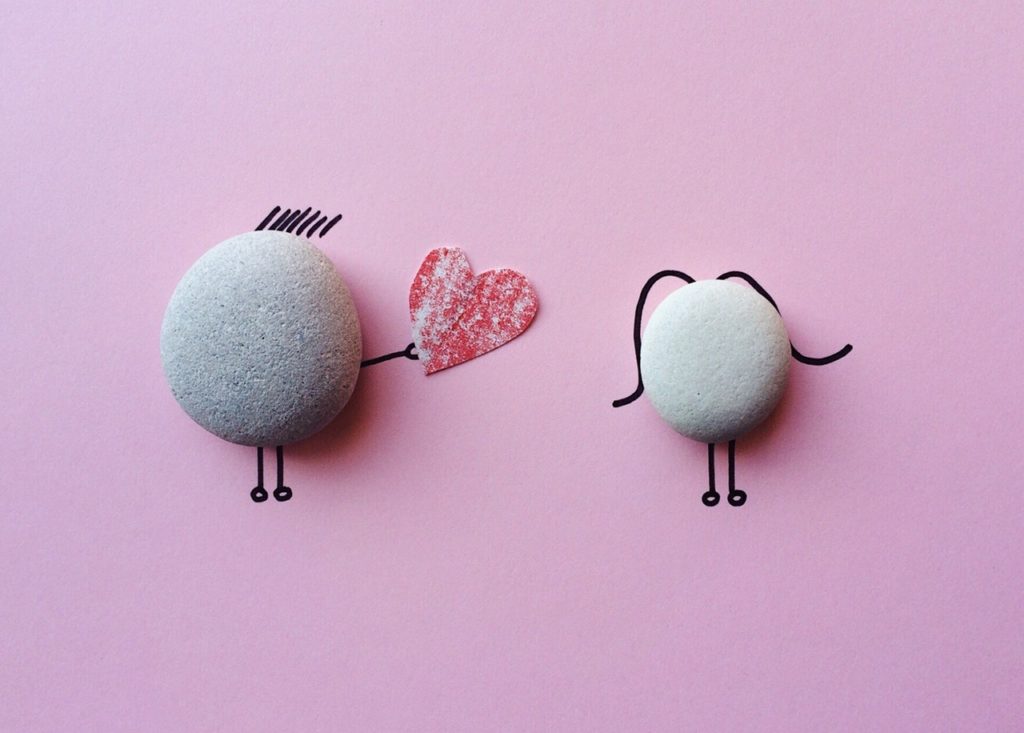Do you believe in love at first sight? The thunderclap, coup de foudre?Those butterflies on steroids feelings in your stomach, and the absolute, unshakeable belief that you have met “the one”. Whatever it takes, that is your decision, and you are going to do everything to make it happen.
Would you apply that to any other major decision? Like which plumber to choose? Or the builder for your house? Or which computer to choose (okay, Apple fans, we’ll exclude you from these examples).
Yet many of us get a bit despondent when customers don’t buy into what we do the very first time they meet us, whether that’s in person, through an advert, some content or someone else writing about you. It does occasionally happen, like the Nigella effect on goose fat sales, or the well-documented history of the No 7 Protect & Perfect Serum.
Except, like many overnight successes, that one had been about 5 years in the making.
What comes before love?
So, if as business owners we want to make people fall in love with what we do, then what does it take? Perhaps, unlike love at first sight, we have to get people to trust in what we do first. When people can trust what you do, then that’s likely to get them to want to do something. And they’ll trust you if what you do is important to them.
But how do you get them to that stage?
First steps: know who you’re talking to
The first starting point is really knowing your tribe, or the people you want to be in your tribe. The people who turn up for you, seek you out and spend their money with you. Not exclusively with you, but for your category, then a big chunk of their spend goes your way. You can’t matter to everyone, and not everyone is going to trust you or even like you.
And that should be ok with you.
Work out the things that bind your customers together, what their similarities are, what the things are they tell you they love about what you do. You can start to look for common threads, and signs from them about what they value, what makes them tick.
What signals are important to your tribe?
When you understand your tribe, you’ll get an idea of what signals would help build trust for them. Some are physical such as:
- Awards of any kind
- The stores or bars or restaurants that carry your products
- The other people that use or like your product
- The publications that write nice things about you and what you do
- How many followers you have on any particular platform
And don’t always think the answer is the biggest or perceived best.
For example, I would imagine the people who trust BrewDog are looking for different badges and signals to those who are buying from St Austell Brewery. BrewDog fans are not going to be impressed by the same people or coverage as the St Austell fans. Which just goes to show there’s room for everyone.
But when you know what external signals are going to work for your tribe, then you can focus your activity and content.
What about other kinds of signals for trust?
Those physical signs are just one element of what might help someone to move along the trust scale with your business. I want you to think about the things where they really see you turn up.
If they sign up for your newsletter, then does it show up regularly in their inbox? Can they set their watch by it? And does it deliver what you promised and then some?
When they turn up on their preferred social media platform, do they find fascinating things from you? Not just once, but regularly. But not too regularly. Is it thumb-stopping content?
Do you give them things to read, to watch, to look at, that interest them? If the answer’s yes, then you should be moving your relationship nicely along the trust scale. But beware if your content is not interesting to them, not stopping that thumb from scrolling. You will be nudging that needle in the wrong direction.
Turn up, frequently
I love a good farmer’s market and love it when there’s a new trader. I might not get to them the first week as I’ve possibly got a set route round, or things I want to get. But when they turn up several weeks on the bounce, then it’s worth investigating. If I like what they do, then they’ve shown they might be a regular occurrence so I could count on them.
After all, what’s the point in falling love with some great doughnuts only to find they were the equivalent of a one night stand?
You need to show up regularly, in the physical sense and in the digital sense. It takes people a lot longer to spot your messages and content than you might think, or like. You might get despondent, and think about giving up. They say that in most endeavours, you’ll get bored before your customers get the message.
It’s always tempting to run after the newest, shiniest thing. There’s always a new something along. Remember when Vine was the big thing? For about three years? And now?
But if you turn up where your tribe turns up, with things that tap into what’s important to them, then they don’t need new and shiny. They want what you do, where you do it. So, allow yourself to get bored, but not complacent.
We trust the familiar
Early adopters love the new and unfamiliar. That’s why they’re the early adopters. Everyone else likes the reassurance of a bit of familiarity. For example, it might feel like everyone has an iPhone, but the sales curve takes a while to get going.
Image courtesy of Statista.
So even the world’s biggest selling phone, a revolutionary change, didn’t dominate the world overnight. Maybe scarcity helped the appeal, and there might have been some appeal in the early adopters themselves. With the stories that Apple told, the iPhone turned up regularly, everywhere, and so it became familiar.
And so people felt more comfortable with the shift from the little itty bitty screen, where playing Snake was the height of entertainment, to the world available to them from their phone. The drop in price might have helped, but that’s a whole different tactic.
From a psychology perspective, then Apple removed some of the risks by making it seem like everyone was doing it, so it was tried and tested. We got more used to seeing them around, and more of us then wanted in. If they’d given up after that first launch, then we’d probably all still be playing Snake today.
What does trust come down to?
For me, you get to trust through those key factors I’ve outlined. Turn up regularly, where your tribe are, with things that connect with them. Become familiar as well as useful, entertaining, and informative.
Even if it’s not love at first sight, it can certainly turn into endless love.
One important last thought
Like in any relationship, don’t get complacent when you’ve got their trust. The quickest way to kill a relationship is to lose someone’s trust. Don’t spend years building it up and then lose it with one bad decision. Keep showing up. Keep complacency at bay.




